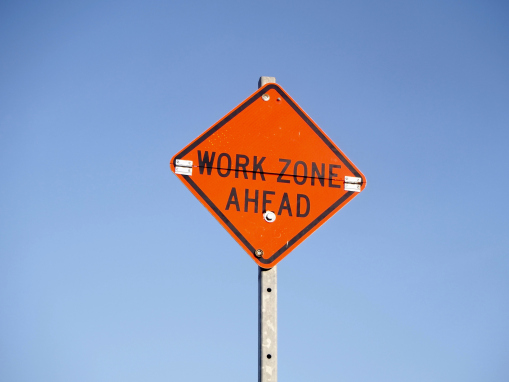April is National Work Zone Awareness Month

Spring has finally sprung! Flowers are starting to bloom, geese and ducks have returned home, and sunsets are getting later.
The change in season also means construction work will be returning to our highways and roads. And as workers return, it’s important we each do our part in keeping roads, and those who work on them, safe.
Work zones, especially on highways with high traffic and speeds, can be extremely dangerous. Statistics show a work zone crash occurs once every 5.4 minutes. Additionally, every day, 70 work zone crashes occurred that resulted in at least one injury and every week 12 work zone crashes occurred that resulted in at least one fatality.
To make roads safer for workers, we’re encouraging everyone to participate in National Work Zone Awareness Week (NWZAW). From April 11-15, you can take part in the annual initiative through various activities that highlight the deadly dangers of inattention at highway work areas.
What is Work Zone Awareness Week?
NWZAW originated in 1997 when staff members of the Virginia Department of Transportation wanted to raise awareness about work zone safety before construction projects picked up during the warmer months.
The first official NWZAW however, didn’t take place until 2000, after officials from state DOTs, the American Traffic Safety Services (ATSSA), the Federal Highway Administration, and the American Association of State High Transportation joined together.
The weeklong annual occasion includes a variety of events like “Go Orange Day,” which encourages individuals to wear orange in support of those who have lost their lives on the job, and “Work Zone Safety Training Day,” which urges companies to spend some time during their day discussing, practicing and implementing safety protocols.
Each year, the committee also decides on a theme that sets the tone of the week. This year’s theme is “Work Zones are a Sign to Slow Down.”
Work zones are a Sign to Slow Down
Traffic cones, warning signs, and portable temporary traffic signals are meant to slow traffic, reducing the risk of injuries. But still these zones remain to be home to thousands of deadly accidents each year.
According to the National Work Zone Safety Information Clearinghouse, in 2019, 842 people were killed in 762 fatal work zone crashes. Among these 842 fatalities, 135 were work zone employees.
So, what can we do to decrease the number of fatalities? Slow down.
It’s common knowledge that the safety of both workers and road users is improved in work zones when traffic is going slower. Not only do crashes at lower speeds result in less severe injuries but driving slower can also provide more time to react in an emergency.
Tips to Protect Workers
Slowing down is just one way you can protect workers while they’re on the job. Below you’ll find a set of sound practices to adopt while passing through work zones.
- Plan ahead. Before heading out, research your route. Try to avoid construction zones, when possible, by using available detours.
- Stay focused. Always keep your eyes on the road. Avoid all distractions like eating and texting.
- Slow down and keep your distance. Lane closures, reduced speeds, and traffic pattern shifts are common in work zones. Stay alert!
- Obey all signs. Be aware of all signage throughout work zones as they provide important information.
Join Us in Making Job Sites Safer!
North America Traffic has spent over 25 years designing and perfecting devices that improve jobsite efficiency and keep flaggers safe. This includes creating the world’s first Auto Flagger Assist Device (AFAD) and later developing a Portable Traffic Signal. Improving the safety of workers in all types of work zones is an integral part of what we do, which is why we participate in NWZAW each April.
If you’re looking to take it a step further and transform your activism into ongoing safety, contact North America Traffic! Our products optimal safety for workers, drivers and pedestrians.
